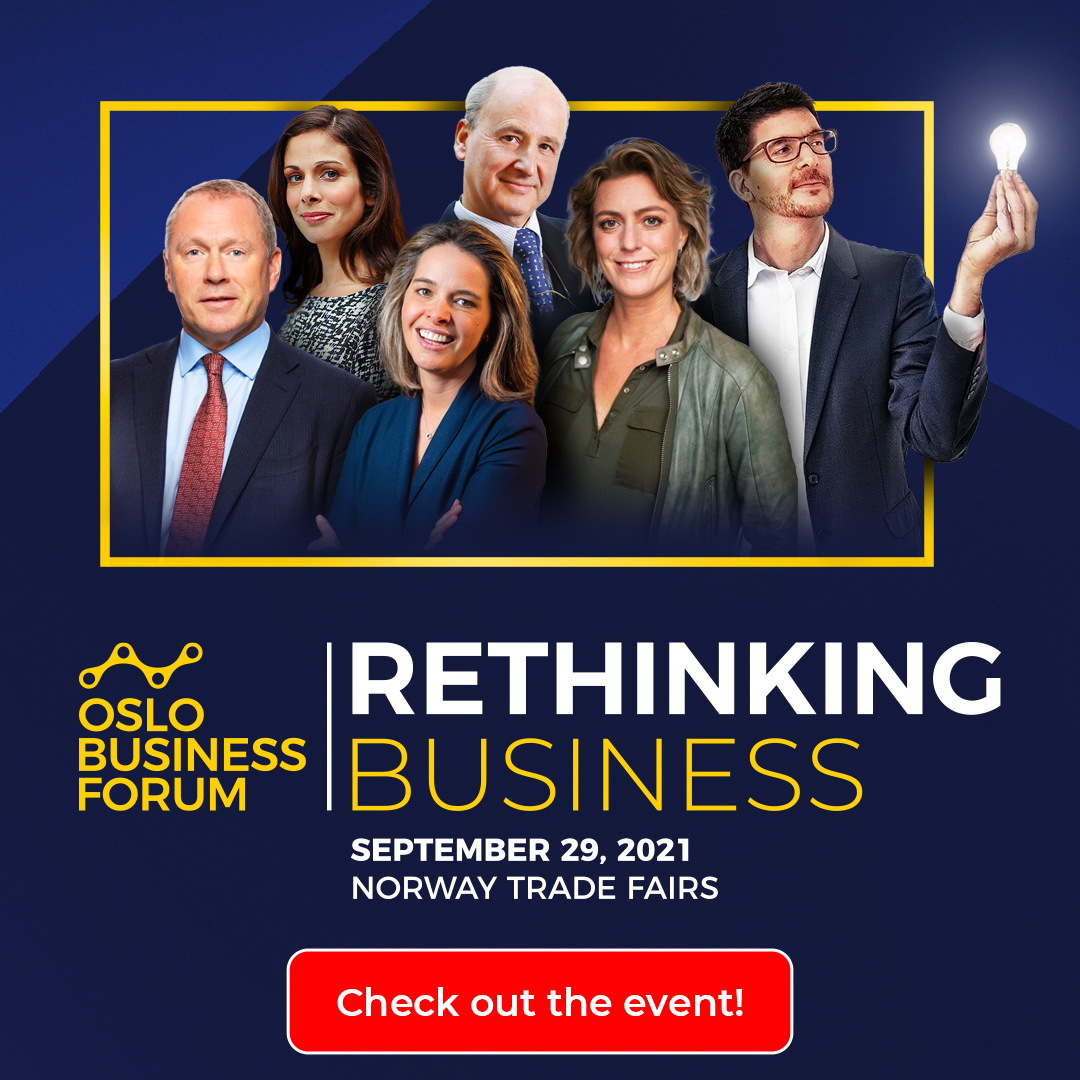On 26 August, our webinar series featured Annicken Day, the founder, CEO, and culture strategist at Corporate Spring. Together with Nordic Business Forum and Dfind, we sat down to discuss the topic of cultivating organizational culture to a strategy for growth.
Here, we briefly list Annicken’s key insights, and if you missed the webinar you can also watch the recording.
Culture Today
Annicken started by emphasizing the evident issue we have to come to terms with: change happens. Shifts are derived from phenomena and issues like globalization, digitalization, demographic changes, the pandemic, and the list goes on. She also underlined a few trends that can be seen in the world of work:
- The move from hierarchies to teams. The amount of more autonomous teams is increasing as these types of teams can be more agile and closer to customers, etc.
- The move from control to empowerment. “We’re also seeing a big shift in how leaders lead.” Instead of following the old “command and control” thinking, leadership is becoming more about engaging and empowering people.
- The move from “resources” to human beings. Instead of talking about employees as resources, we are starting to talk about them as human beings. “We are seeing the increasing awareness of the human side of business.”
- The move from in-office to hybrid work. Especially during the pandemic, the speed of this shift has been accelerating and it demands a whole new type of leadership and structure in organizations.
- Culture as a Strategy. Culture is becoming a more important issue for leaders and organizations to think about strategically.
To take one step back, Annicken wanted to define what she means by the word culture. “Culture is how you work together, collaborate, communicate, innovate, solve problems, treat each other, and not to forget—your customers.” Basically, culture determines how you get things done in your team or organization.
How about culture as a strategy? “When we talk about culture as a strategy, we talk about consciously and deliberately building the kind of culture and strengthening the kind of culture that you need in order to succeed in your business.”
Culture does appear even unconsciously, but if you want to take full advantage of a strong culture, you should consciously and strategically develop your culture. To highlight her point, she shared some current brutal facts:
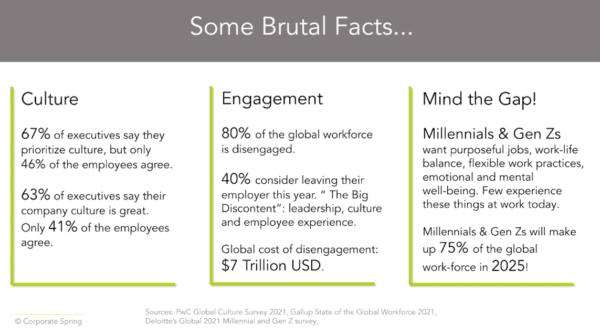
The ROI of Making Culture a Strategy for Growth
So what are the proven benefits of strategically developing organizational culture? According to Annicken, there are plenty. When you’re able to consciously enhance your culture, these are some of the benefits you can expect:
- +50% employee retention
- +20% customer satisfaction
- +18% business performance
- +23% profitability
- 3 x higher shareholder return
- 5 x more likely to change
- 73% less burnout
- 29% happier with their lives
3 Mistakes Leaders Make When Trying to Change the Culture
Annicken further explained that another issue that’s holding leaders back from focusing on culture is that they don’t really know how to get started. To learn what to do, Annicken first warned us of what NOT to do.
When leaders try to implement change in company culture, there are a few common mistakes Annicken listed:
- “Burning platform” instead of WHY. Even today there are leaders who are trying to change people by scaring people—but it won’t work. Instead, explain why there’s a need for change.
- Talk to people, not WITH. People are not very likely to change if you don’t invite them to the conversation. Engage them to take the journey with you, and they will be inclined to the change.
- Say, but not DO. You know it: the good old “do as I say, not as I do” doesn’t work. If you are a leader and you want to change people, you first need to start doing things yourself.
A Model for High-Performing, High-Growth Cultures
Annicken reminded us about all the things that actually affect culture; values, mindsets, and behaviors are all factors shaping culture. “Many people tend to forget that what we value—what we deem important —shapes the way we think. And the way we think affects what we do. And what we do becomes the culture.” So, be clear about your organization’s values and make sure that your people remember, understand, and believe in them.
Finally, Annicken provided a tool for you to use in order to get further in the process (see the picture of the model below). As the very base for strong company culture, you need three building blocks: purpose, identity, and trust.
- Purpose is your reason for existing. Everyone in your company needs to know what’s the cause they are working for. It’s all about intrinsic motivation. According to Annicken this is “why I get up in the morning”.
- Identity is about values, beliefs, mindsets, inclusion, equity, and diversity. Everyone in your organization needs to feel they are a part of that group. According to
- Annicken this is “I belong with these people”.
Trust is clearly necessary. In order to get things done, you need people to feel psychologically safe, and that they can be themselves at work. According to Annicken this is “someone has my back”.
In the next phase of the model, you can start to focus on enhancing a growth mindset in your team. “We as human beings have this amazing strength that we can choose our mindset.” Annicken pointed out that especially focusing on our change-ability, response-ability, growth-ability can be very beneficial for creating a strong culture.
On the top of the pyramid, the model highlights joy and passion. When reaching the peak, you will start seeing people truly enjoying what they do, and that’s when you achieve high-performing team status. Annicken underlined, that “nothing great in this world has been created without passion.” But she continued, that if you have passion only, it might be a double-edged sword. “You need to combine it with joy.”
It’s good to note that there are essential supporting blocks on the sides: collaboration, communication, and leadership. Without the support of these, it might be very hard to get the model to work.
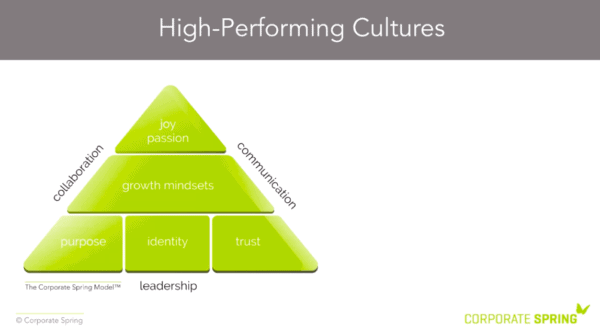
Finally, Annicken went back to the benefits and specifically emphasized one. So, if you take nothing more from Annicken’s thoughts, take this: “happy people are good for business”.
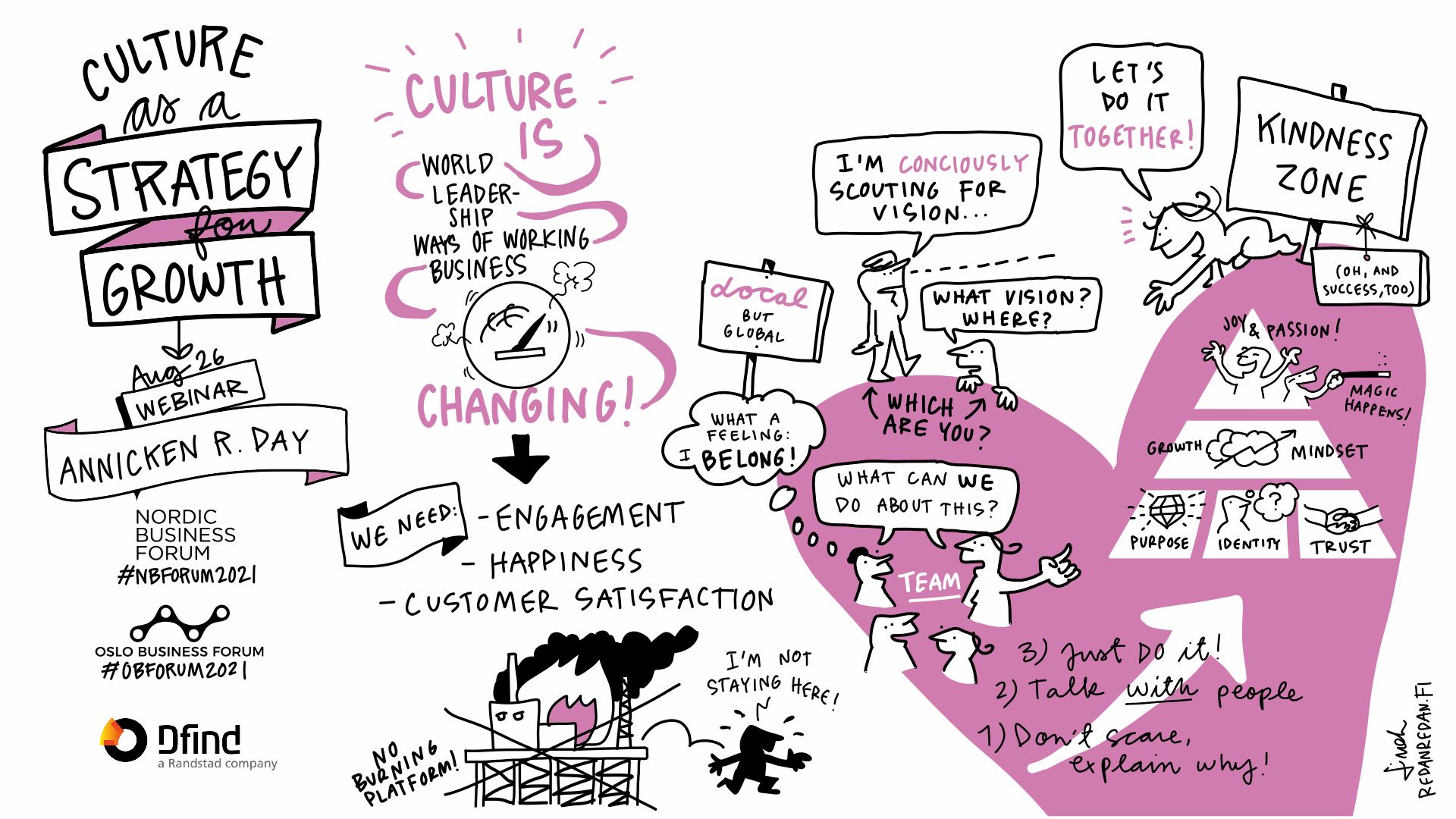
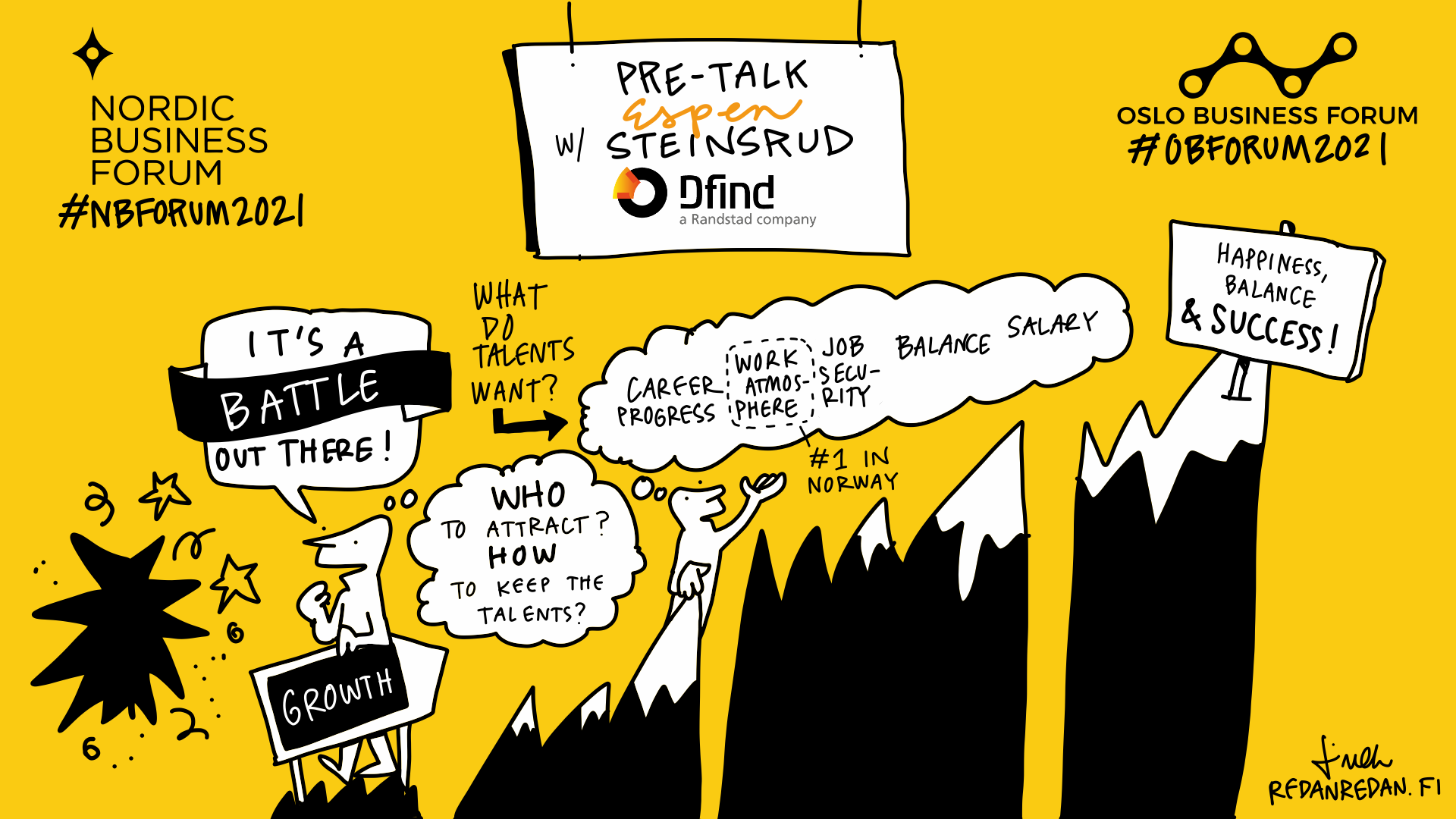
Visual Summary by Linda Saukko-Rauta
Get your online ticket for Rethinking Business 2021!
Early bird prices are currently available!